DivineCloud
UI / iX
Visual Design
DivineCloud cloud operation tool 2016
My ROLE
Freelance UI / iX / Visual Designer
TOOLS
Adobe Illustrator, Adobe Muse, HTML5, CSS3, Sketching…
Redesigned in Figma
DELIVERABLES
Hi-Fi UI Screens.
Click-through Prototype
Visual Design Specification
HTML Mockups
Visual Assets
GOALS
The core idea was to design an environment with multiple tools for professionals to automate application deployment to the cloud requiring a minimal learning curve. Providing traditional and “no-code” automation tools as well, to overcome repetitive tasks. To create a user interface that would allow even non-professionals to be operated. Integrating several distinct features/tools into a coherent, easy-to-operate UI architecture with an intuitive navigation pattern. Design a responsive UI Layout for desktop, laptop, and handheld touchscreen devices. Generate a modern, competitive visual design.
Introduction
DivineCloud is a cloud operation management/application deployment toolbox with almost zero learning curve.
Ad-Hoc Command Execution - With DivineCloud, DevOps can run Ad-Hoc commands & scripts written in different languages (Shell scripts, Ruby, Perl, Python, Scala, etc.) across 100's of Servers in a matter of seconds.
RunBook Automation - Works for both, simple deployments like Web Application Deployment & complex deployments like Hadoop ecosystem deployments. The complex procedures can be encapsulated in DT RunBooks and executed on the group of servers with relative ease. Using DT Runbooks, DevOps can literally define a complex infrastructure and then repeatedly install it on any cloud.
One-Click Deployments - DevOps dashboard is an ideal option to define & organize tasks to be executed frequently by the DevOps team, in a single panel. For example: For AWS cloud, users can create an AWS Dashboard with tasks like Setup VPC, Deploy Tomcat Servers, etc. From the dashboard, the DevOps team can execute these tasks with a single click.
Hybrid Cloud Management - Managing servers distributed across the globe, either on public cloud and/or private cloud.
With DivineCloud, seamlessly manage 1000's servers (physical or virtual) located across any private cloud or public cloud - AWS, Google, Rackspace, Digital Ocean, Joyent, Linode, etc.
Problems - Design Topics
Integrating distinct tools & methods into one coherent UI environment. Provide a clear navigation paradigm. Allow immediate switching between tools. Assure easy-to-understand, intuitive process step feedback. Make sure the overall user interface pattern is consistent and easy to learn. Provide contextual, high-level customization for “Pre-Canned” processes, RunBooks.
DivineCloud UI
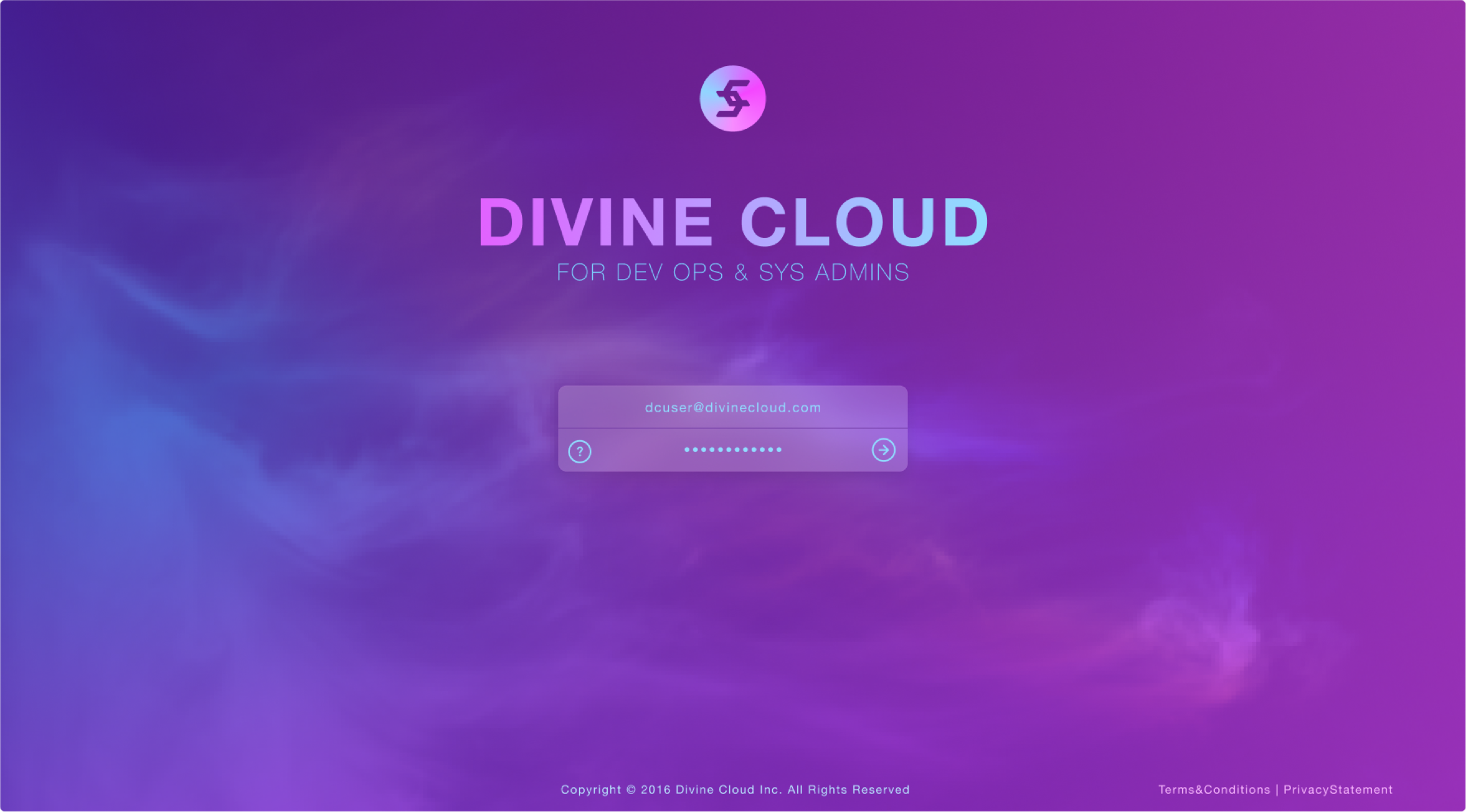
DC Performance Overview Screen
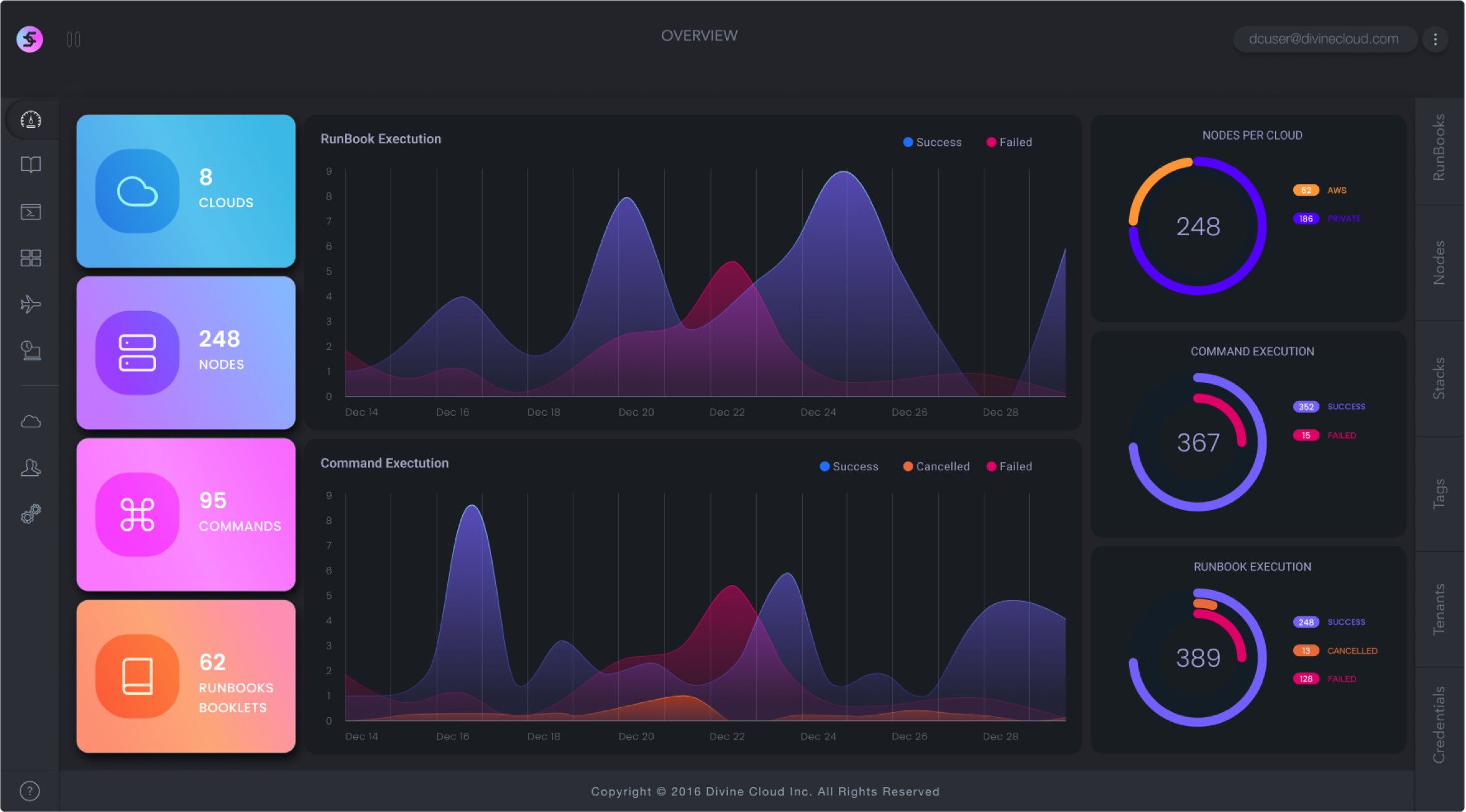
Application Status / Performance Overview Screen
Application stats Data visualization for admins. Contains a list of operation history-related performance indicators, visual presentation of failure vs. success rates.
RunBook & Booklet Library
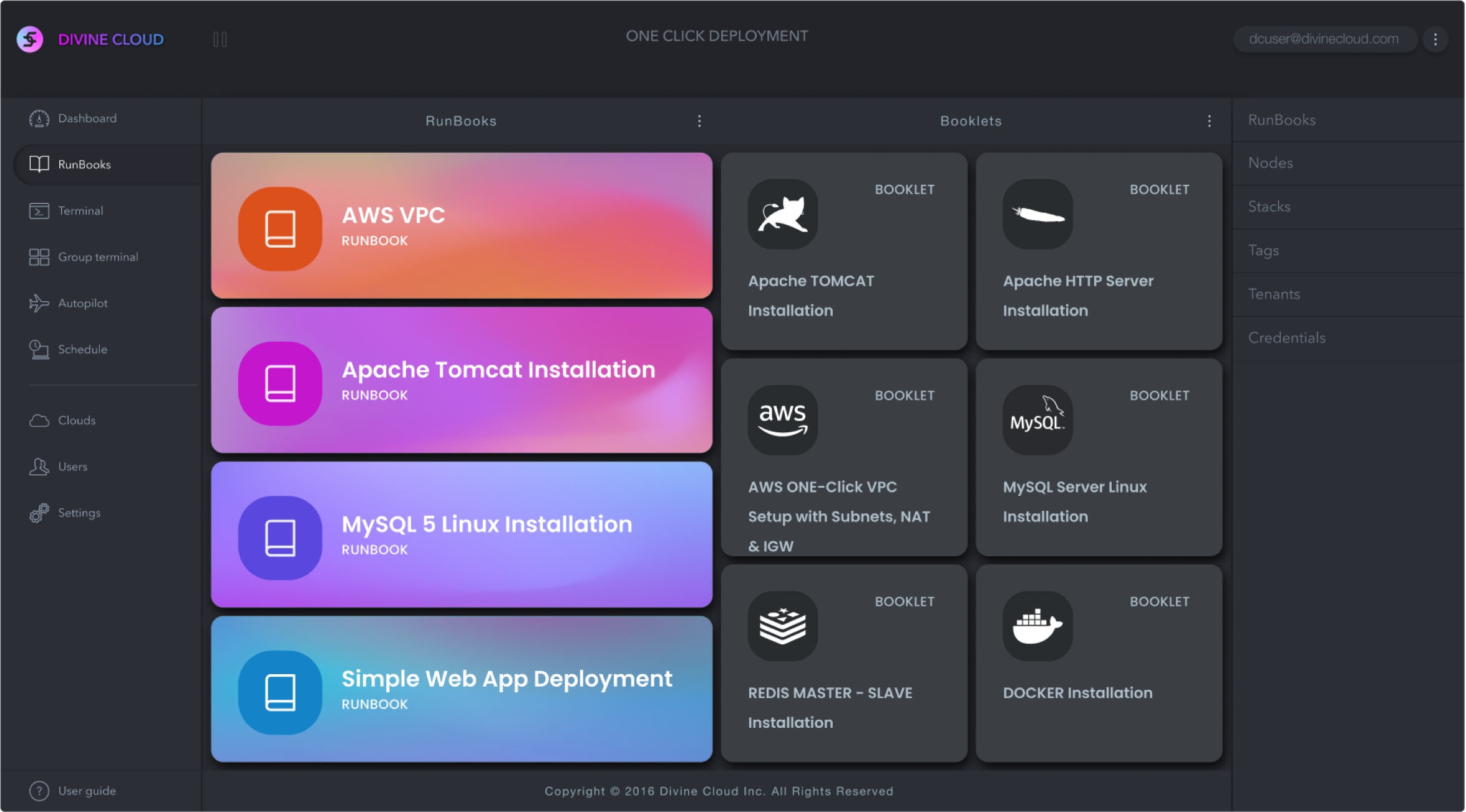
Dedicated container for managing and launching automated, Pre-Canned sequenced scripts or processes, RunBooks, and Booklets.
These RubBooks and Booklets can be created, edited or configured, and saved. This dedicated screen is where users can manage, have full control over these pre-fabricated processes.
Create or Edit RunBooks
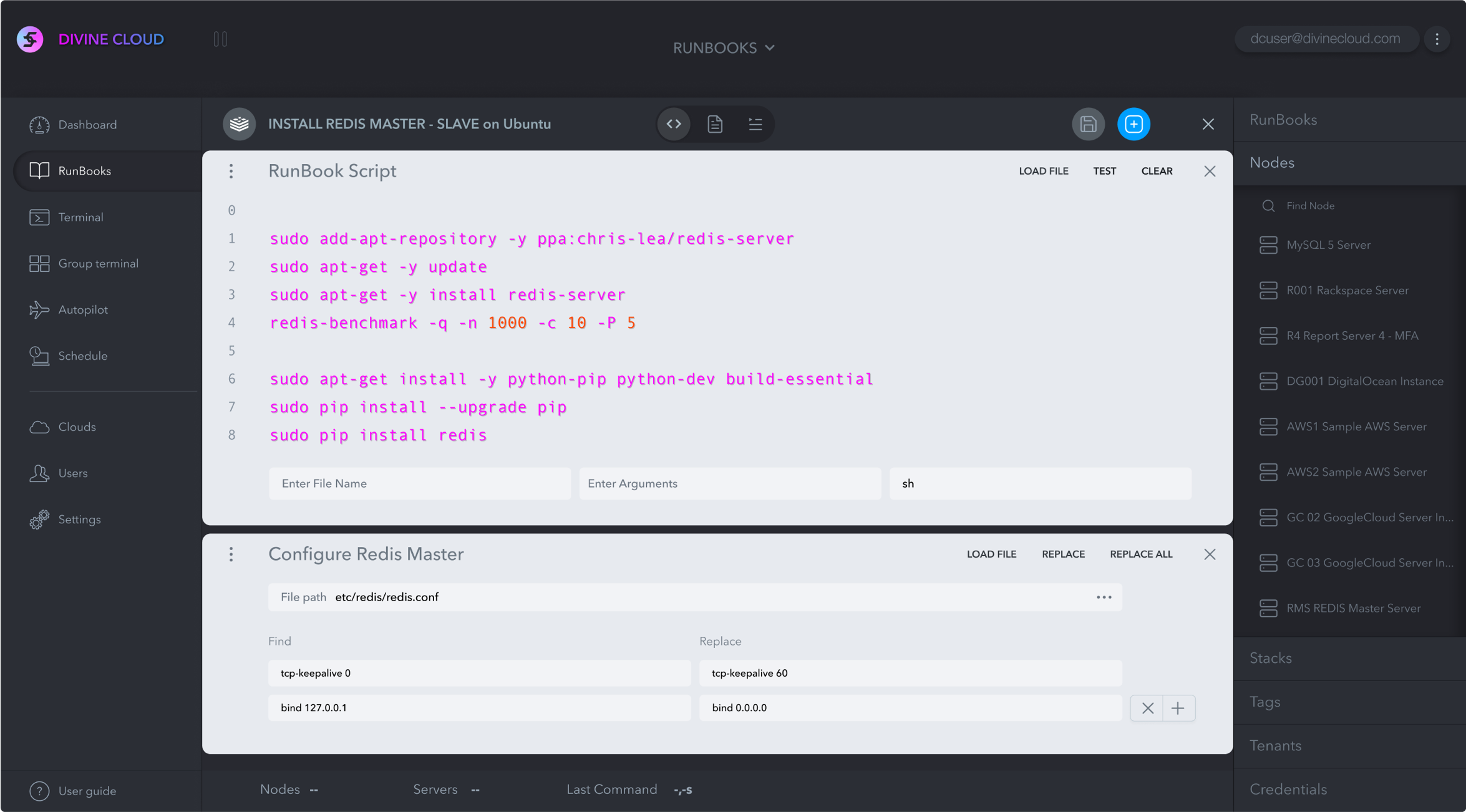
Sequencing and or editing an installation process RunBook. Steps can be fully configured, modified, or written from scratch. This UI provides visual editing to assemble a new process, document it. Pre-written scripts can be also uploaded to a new process step block, so a user can assemble a full process without even writing a single line of code.
Assembling / Editing a new RunBooks
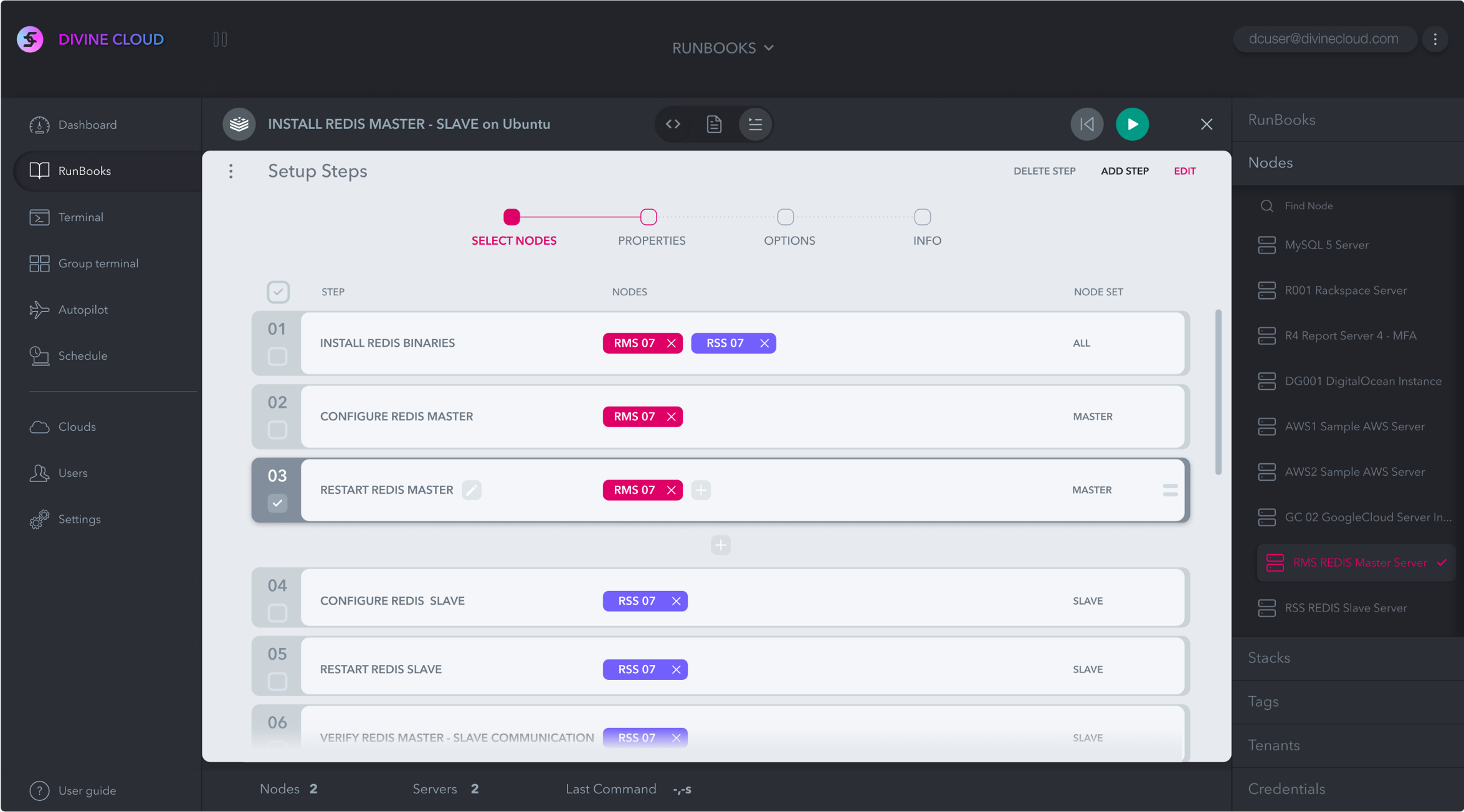
RunBook configuration screen where an operator has the option to set up the process. Also, re-sequence and existing RunBook to interject additional steps, add / edit nodes, set up or modify properties, selecting between different options to fully customize it for any use case. Naturally, a run book can be just used out-of-the-box and even automated by scheduling it to run.
Running a RunBook
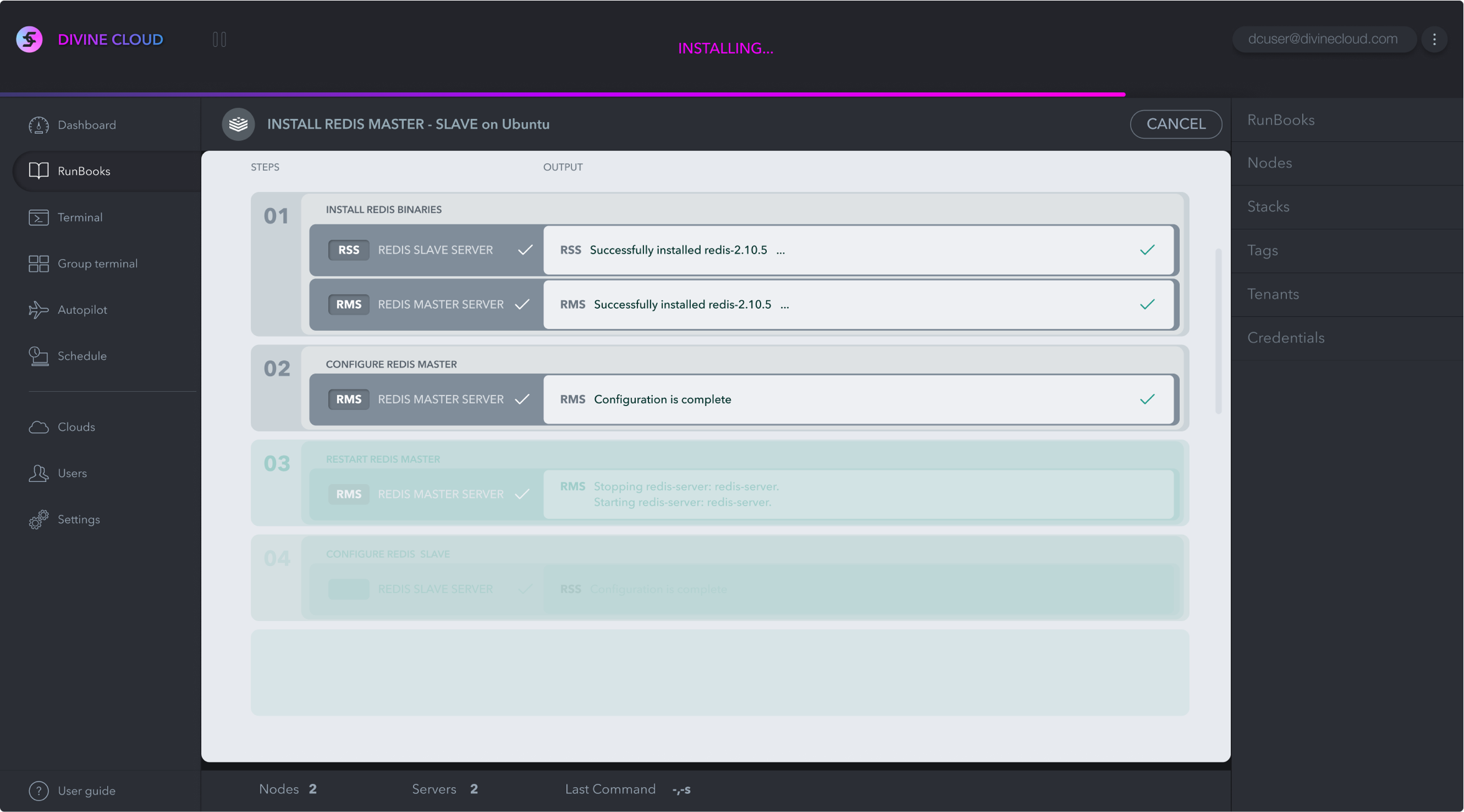
Users can launch a RunBook from the RunBook library as well as right after it was created. When running the RunBook the screen starts to load the completed steps marking them up as done.
At this stage, there still is an option to roll back the entire operation and re-configure the RunBook.
RunBook Completion
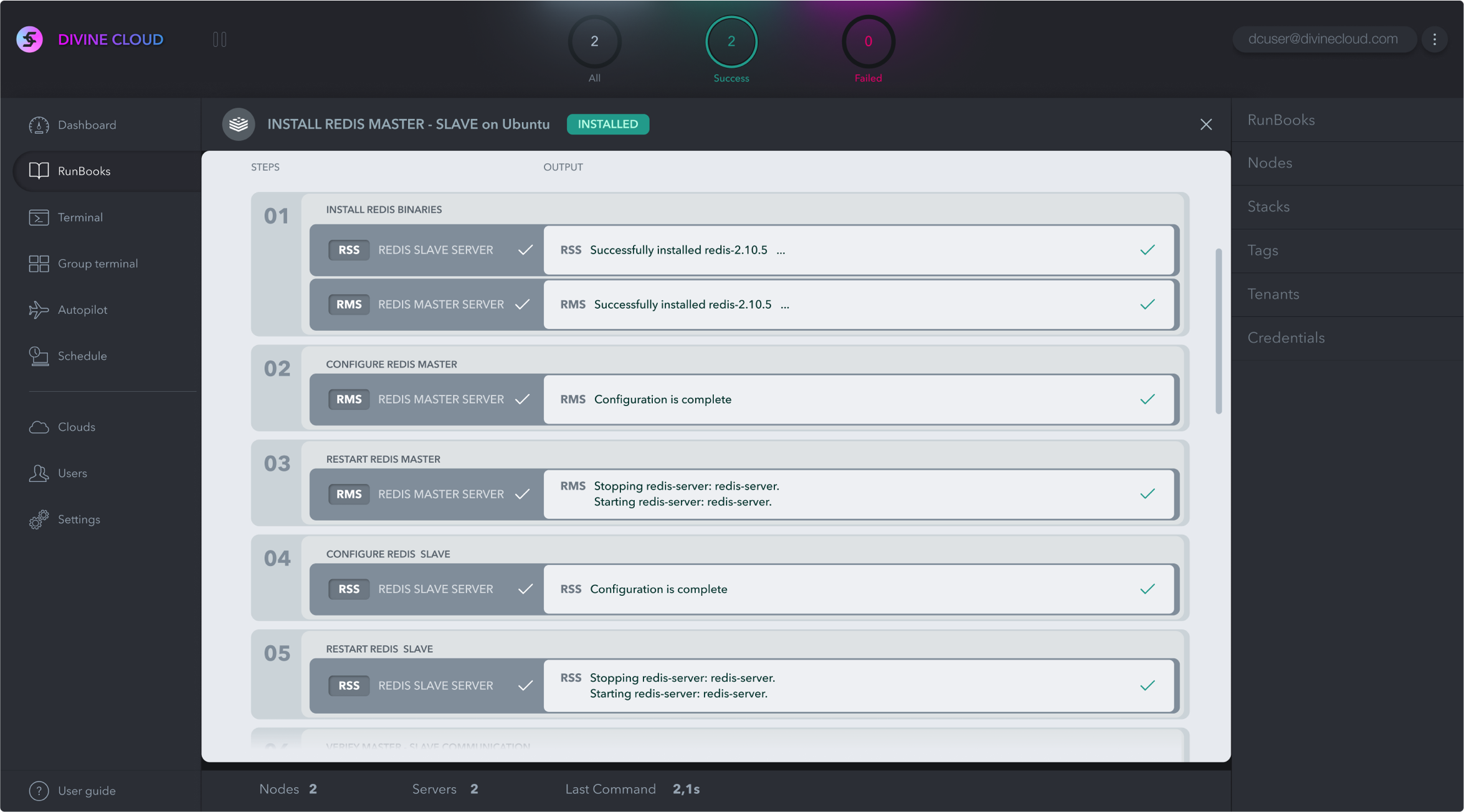
The completion screen marks up all completed steps and also displays any failure and succeeded steps. If the process was successful, it signals the completion and the user can close the process sequence display to land back on the RunBook library screen.
Copyright © 2022 Peter Budavari. All rights reserved.